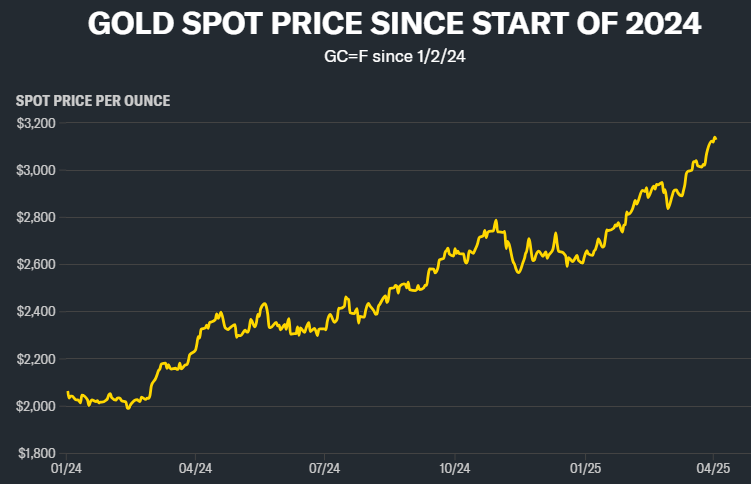Following a surge to all-time highs, gold prices have experienced a pullback amid investor reactions to economic news and market volatility. This article explores recent price action and offers guidance on gold investment strategies.

Gold prices experienced a notable pullback after recently scaling record highs. While daily figures fluctuate, the trend showed a retreat from peak levels, indicating profit-taking or shifting investor sentiment following a strong rally. For instance, after hitting unprecedented levels, gold saw declines, reflecting market adjustments.
This movement occurred as investors digested evolving economic news and potential global trade impacts [originally mentioned specific tariffs]. While stock market weakness often bolsters gold’s appeal, the current complex economic environment can lead to less predictable reactions. Concerns about the broader economy, potential recessionary pressures, and inflation often drive investors towards gold, which is traditionally viewed as a safe-haven asset during times of currency devaluation and equity market volatility. The surge to record highs aligned with this heightened uncertainty.

Despite any short-term dips, it’s important to view gold’s performance in a broader context. Compared to levels seen just a month prior, or especially a year ago, gold often maintains significant gains, highlighting underlying strength and continued investor interest in the precious metal as a store of value.
Tracking Gold and Related Equities
For those looking to monitor the market, real-time gold price tracking is available 24/7 on major financial news platforms (like Yahoo Finance). Additionally, investment screeners can help identify and analyze companies within the gold industry, offering another avenue for exposure to the sector.
How to Approach Investing in Gold
Investing in gold strategically typically involves a few key considerations:
-
Define Your Goal: Understand why you are buying gold. Common objectives include:
-
Diversification: Gold often moves independently of stocks and bonds, potentially smoothing portfolio returns.
-
Inflation Hedge: Historically, gold has been sought to protect purchasing power during inflationary periods.
-
Crisis Insurance: Seen as a fundamental store of value during extreme economic instability or currency collapse.
-
-
Set an Allocation: Decide what percentage of your overall portfolio should be dedicated to gold, considering your risk tolerance and goals.
-
Choose the Form: Gold can be held in various ways:
-
Physical gold (coins, bars)
-
Gold ETFs (Exchange-Traded Funds)
-
Gold mining stocks
-
Gold mutual funds
-
-
Consider Your Timeline: Are you investing for the short-term or holding gold as a long-term strategic asset?
Gold’s resilience during turbulent times reinforces its role as a portfolio stabilizer for many investors. It’s often used to potentially limit losses in equities or offset purchasing power erosion from inflation. As Scott Travers, author of “The Coin Collector’s Survival Manual,” advised, viewing gold as an “insurance policy” against calamity can be a prudent approach for many investors.